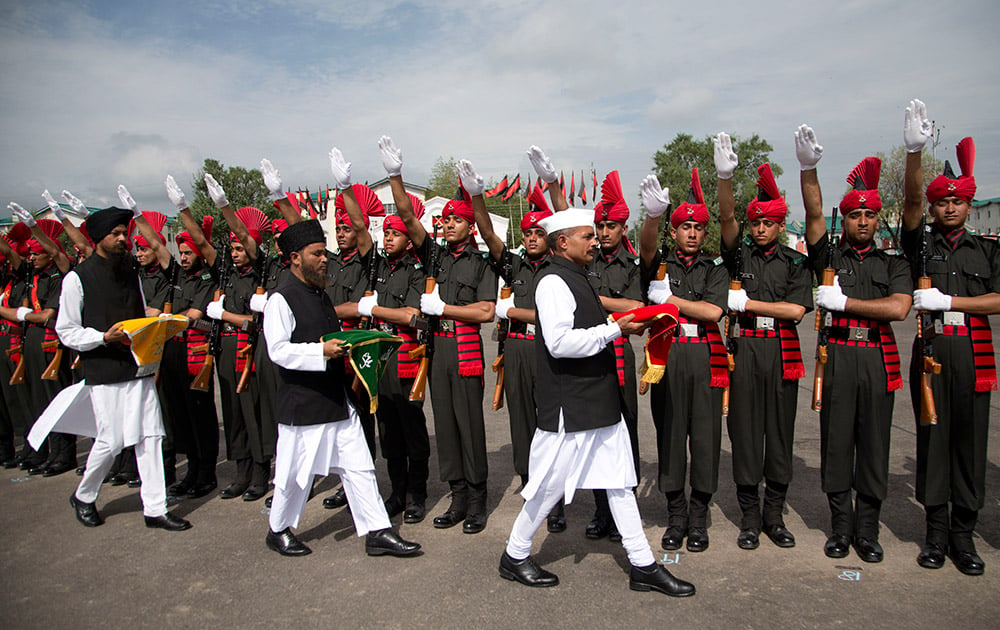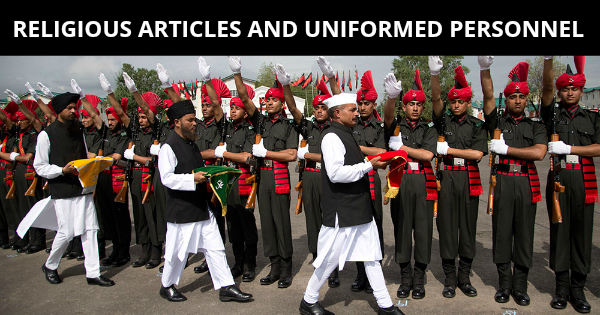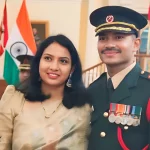
Articles by Women Officers
The instructions were especially strict for the Indian Army’s women officers prohibiting the use of bangles, ear-studs, lipstick and nail-polish. Usage of sindoor was allowed in uniform but only if it is not visible when a beret is on.
The instructions for men officers and jawans were equally strict. Only a signet ring on the left hand was allowed, only a single sacred thread was allowed and that, too, on the day of Puja. Multiple sacred threads on the wrist are not allowed.
Articles on Wrists
Kadas (steel bracelets) can be worn only by Sikh officers and men or officers commanding Sikh troops. As per the instructions, no one can sport “tilak, vibhuti or any other religious symbol” while in uniform, no charms or sacred thread can be worn around the neck. If worn, no part should be visible outside the uniform.
Wearing Watches
While there are a lot of restrictions on wearing watches among the men, generally officers prefer wearing simple non-flashy non-ostentatious watches. There is no hard and fast rule that prohibits personnel from wearing a watch though.
Civilians Wearing Army-Pattern Dresses
In January 2016, the Army asked civilians to avoid wearing “Army-pattern” dresses and shopkeepers to refrain from selling combat clothes, as it issued fresh guidelines to the public to prevent terror attacks and making it illegal to sell Army uniforms to unauthorized persons.
The guidelines, came nearly a week after six terrorists infiltrated through the border and launched an attack at the Air Force station in Pathankot, claiming the lives of seven security personnel.
It is only the beret and badges that distinguish the real armed forces personnel from someone wearing fatigue as a fashion-statement, therefore, making it very difficult to distinguish a real army man from the fake.
Beards and Long Hairs
In December 2016, the Supreme Court ruled out a Muslim Indian Air Force (IAF) Corporal’s appeal to keep the beard. The reason stated was defence service’s regulations, aimed at maintaining a non-religious on-duty appearance.
To maintain a non-religious outlook IAF not only prohibits its officials from keeping beard but also restricts them from putting tilak on the forehead or wearing any threads at on the wrist or arm. This stands true for all sister services of India.
The regulations relating uniform is implemented for all religions including Muslims, Hindus or Sikhs. Though the Sikhs are allowed to keep the beard or long hair, the defence service had extensive regulations for its maintenance too.
Such personnel are to maintain it in a manner that it is neat, trimmed and tidy and not more than the length which could be covered by one fist. Mustache will be a part of the beard at all times. Sikh personnel keeping short hair and beard are to wear a turban as applicable to those maintaining long hair.
“Your religion is the religion of your men”
Recalling an incident during his first days in SF, Col SS Shekhawat said –
“When I was commissioned and I joined SF, my CO asked what is my religion and caste. I said- Sir I am a Hindu Rajput. He said- bloody fellow, you take a dip in the dirty water. So I went and I took a dip in the water. Then I realised that there is something wrong I have said. Then again he asked and I said, sir, my religion is SF and my caste is SF. He then told me- you see, you are an officer. And your religion is the religion of your boys. So when we have this kind of template- and when you apply this kind of template in the country, I think most of the problems would be solved.”
Conclusion
Every member of the armed forces, while on duty, is required to wear the uniform and not display any sign or object which distinguishes one from another. Uniformity of personal appearance is quintessential to a cohesive, disciplined and coordinated functioning of an armed force. Every armed force raised in a civilised nation has its own ‘dress and deportment’ policy.













